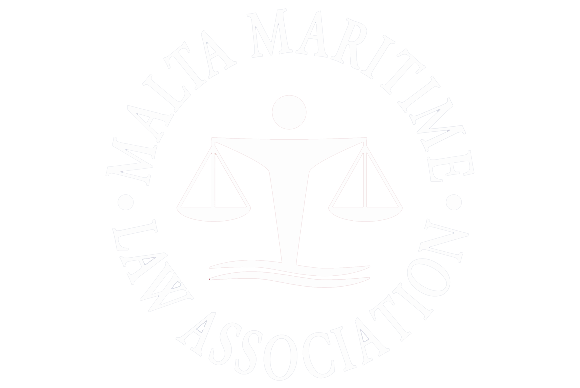4.1 How long does maternity leave last?
In virtue of the Protection of Maternity (Employment) Regulations, Subsidiary Legislation 452.91, an employee is entitled to an uninterrupted period of 18 weeks of maternity leave.
An employee who is pregnant, breastfeeding or has recently given birth will also be entitled to special maternity leave, in the event that such employee could be exposed to a risk at work which could jeopardise her health and safety, and/or the pregnancy or the child. Furthermore, if an employee needs to attend antenatal examinations during her hours of work, then such employee would also be entitled to time off without loss of pay or any other benefit.
4.2 What rights, including rights to pay and benefits, does a woman have during maternity leave?
During the first 14 weeks of maternity leave, a woman is entitled to full pay by the employer. If a woman avails herself of an additional four weeks of maternity leave, then she will not receive payment from the employer; however, she will be entitled to the Maternity Leave Benefit in accordance with the provisions of the Social Security Act.
Furthermore, an employee on maternity leave shall be deemed to have been in employment during such leave. She shall also be entitled to all rights and benefits which may accrue to other employees of the same class or category of employment at the same place of work, including the right to apply for promotion opportunities at her place of work. However, during the period of maternity leave, the employee shall have no right to any bonus or allowance related to performance or production.
A pregnant employee, an employee who has recently given birth, or a breastfeeding employee may not be dismissed by the employer from the date in which such employee informs her employer, by means of a certificate issued by a registered medical practitioner or midwife, of her pregnancy to the end of her maternity leave, or during any period of special maternity leave, because of her condition or because she avails herself or seeks to avail herself of any rights in terms of law. Furthermore, if an employee has still not exhausted her probationary period, then such period is suspended during the maternity leave or special maternity leave. Should the employer need to dismiss an employee during the probationary period and after having been notified of the employee’s condition, then such employer would be legally obliged to provide the employee with a valid reason in writing in order to confirm that the dismissal is not due to the employee’s condition.
4.3 What rights does a woman have upon her return to work from maternity leave?
Upon her return to work from maternity leave, a woman has the right to return to the same role with the same wages which she would have been entitled to prior to the maternity leave. Should this no longer be possible for a valid reason, then the employee shall be entitled to equivalent or similar work which is consistent with her employment contract.
4.4 Do fathers have the right to take paternity leave?
The Work-Life Balance for Parents and Carers Regulations, Subsidiary Legislation 452.125 has introduced the right of paternity leave, consisting of 10 working days. This may be availed of by fathers and equivalent second parents, where and insofar as they are recognised as such by national law, on the occasion of the birth or the adoption of the employee’s child. Paternity leave will be awarded irrespective of marital or family status. Paternity leave shall be paid in full and it may be availed off irrespective of the period of work or length of service undertaken by the employee.
4.5 Are there any other parental leave rights that employers have to observe?
In terms of the Work-Life Balance for Parents and Carers Regulations, Subsidiary Legislation 452.125, parents each have an individual right to parental leave per child, on the grounds of the birth or adoption of a child for the purpose of taking care of that child. This parental leave entitles each parent to four months of leave from work, which may be availed of until the child has attained eight years of age. All employees, whether male or female, full-time or part-time, and whether employed on an indefinite or fixed-term contract, shall be entitled to parental leave, provided that the employee has been in employment with the same employer for a continuous period of at least 12 months. The first two months of parental leave shall be paid at the same rate established for the sickness benefit entitlement under the Social Security Act. Parental leave shall be paid as follows:
- 50% of the entitlement will be paid, where the child or children for whose care parental leave was granted has or have not attained four years of age;
- 25% of entitlement will be paid, where the child or children for whose care parental leave was granted, has or have attained the age of four years but has or have not yet attained the age of six years; and
- 25% of entitlement will be paid, where the child or children for whose care parental leave was granted has or have attained the age of six years but has or have not yet attained the age of eight years.
With the introduction of this new Subsidiary Legislation, two months of parental leave cannot be transferred from one parent to another.
An employee who applies for parental leave must give at least two weeks’ notice in advance to the employer, specifying the beginning and end of parental leave. An employer who receives such notice of parental leave may only postpone such leave for justifiable reasons related to the operations of the place of work. Employers are also obliged to keep a record of the parental leave for every employee, and shall on the demand of the worker which may be made even after the termination of employment, deliver to the employee a written statement of the leave to the worker, within two weeks of such written request. Parental leave shall be availed of by the employees in established periods of at least two weeks each, unless an agreement to the contract is reached by the employer and employee or collective agreement. Employees who make use of parental leave shall retain the right to apply for promotional opportunities and may have the possibility of making arrangements for appropriate reintegration measures, which must be agreed between the parties.
4.6 Are employees entitled to work flexibly if they have responsibility for caring for dependants?
The Work-Life Balance for Parents and Carers Regulations, Subsidiary Legislation 452.125, introduced the entitlement of five unpaid working days as carers’ leave, which may be utilised by employees who need to provide personal care or support to a relative, or to a person who lives in the same household as the employee, and who is in need of care and support for a serious medical reason. A relative in need of such personal care and support may be the employee’s son, daughter, parent, spouse or a partner in a civil partnership. This leave may be granted to employees upon presentation of medical proof that the relative, or person who lives in the same household as the worker and in relation[JS1]to whom carers’ leave is requested, is suffering from an illness and is in need of care and support.
Furthermore, with the introduction of the Work-Life Balance for Parents and Carers Regulations, Subsidiary Legislation 452.125, employees with children up to the age of eight years, and carers, may request flexible working arrangements from their employer for caring purposes. Such flexible working arrangements include remote working, working reduced hours and flexi-time. Employers are bound by law to consider and respond to such requests within two weeks and must provide reasons for any refusal or postponement of such arrangements. Such flexible arrangements may, however, be limited in duration, and the employee shall always retain the right to request to return to the original working conditions where justified or due to changes in circumstances.
Av. Charlene Gauci
Senior Associate
This article was first published in ICLG – Employment & Labour Law and may be accessed on the ICLG to Employment and Labour Law 2023 publication.
For more information you can contact one of our Team Members at Mifsud & Mifsud Advocates.











